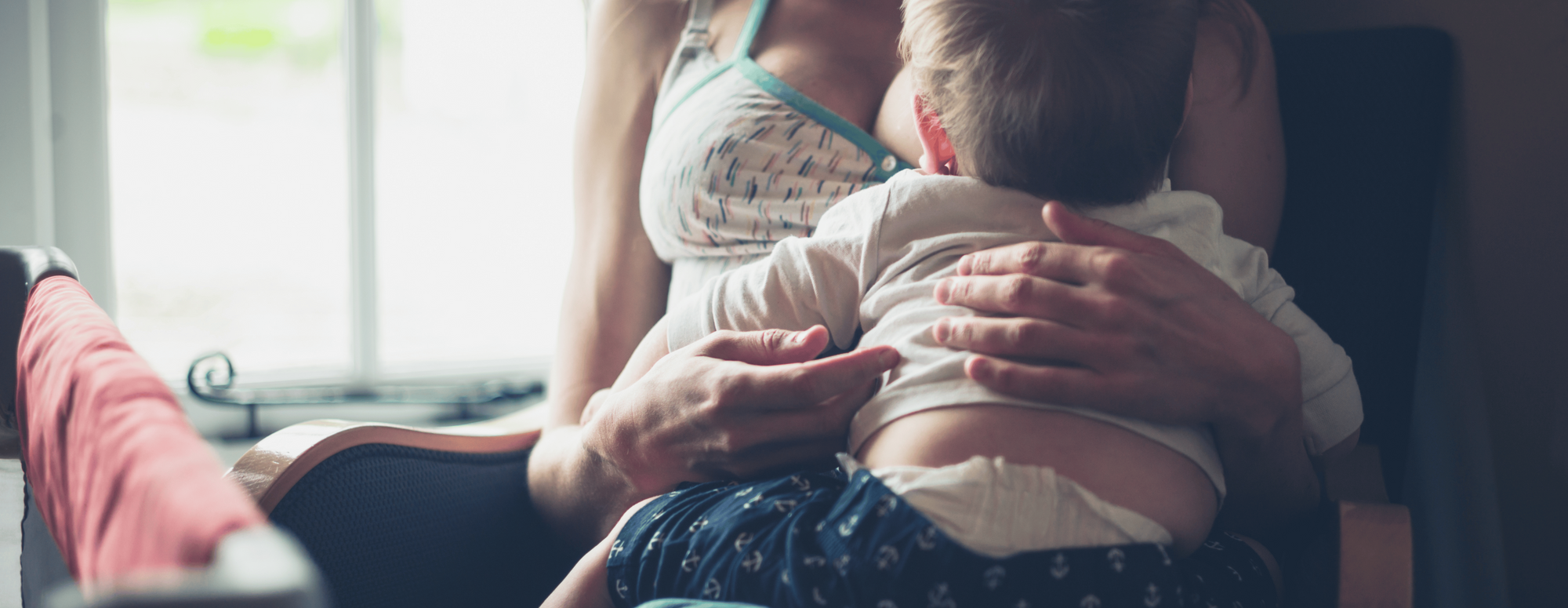Breastfeeding is natural, but that doesn’t mean it always feels easy. It usually takes a little practice (and patience!) to find a breastfeeding position that works for both you and your baby. The good news? Once you do, feeding becomes so much more relaxed and enjoyable.

Today, I want to introduce you to one of my favorite options — upright breastfeeding. You might have heard it called the Koala hold, the Saddle position, or even the Australian breastfeeding hold. No matter what name you use, this technique can be a real game-changer.
There’s no “perfect” way to breastfeed. Every mother-baby pair is unique. What matters most is that your little one is latching well and getting enough milk, and that you feel comfortable. Some babies love upright breastfeeding, while others may not take to it right away — and that’s completely okay.
In short, this position can be a lifesaver — for both you and your baby.
The Benefits of Upright Breastfeeding
- First, it can make life easier if you’re dealing with sore nipples. When breastfeeding upright, the pressure is lifted off the nipple, which may help reduce pain and prevent further nipple damage.
- Do you have a strong let-down reflex? If your milk sometimes sprays too quickly for your baby, nursing in the upright breastfeeding position can help. By leaning back just a little, gravity slows the milk flow. Your baby can drink more calmly without choking or gagging.
- This position can also be helpful if your little one struggles with gas, reflux, or colic. Sitting them more upright keeps the milk down in their tummy, makes burping easier, and may reduce spit-up.
- Older or heavier babies can be tricky to hold in the traditional cradle hold. The upright breastfeeding hold takes strain off your arms, shoulders, and back.
- It’s also great if you’ve had mastitis or blocked ducts, because it allows milk to drain from parts of the breast that aren’t always well-emptied in other positions.
- When your baby is battling a stuffy nose, ear infection, or reflux, feeding upright can provide the relief they need.
- Some parents also find this position blends perfectly with babywearing in a sling or carrier, making on-the-go feeding a whole lot easier.

How to Breastfeed in the Upright Position
The upright breastfeeding position step by step.
- Get comfy: Sit in a supportive chair. If it feels better, lean back just a little.
- Position your baby: Place your little one straddling your thigh or hip so they face your breast. Think of it as a mini “tummy-to-tummy” cuddle, but seated upright.
- Support their body: Gently press their chest against yours. Support your baby’s head and neck with your arm on the same side you’re nursing from. Just make sure their head can still tilt back slightly for a deep latch.
- Guide the latch: Let your baby lean forward and find your nipple. You might need to adjust your breast or bring them a bit closer. Keep their nose in line with your nipple. Brushing their nose with your nipple is a gentle way to encourage them to open wide.
- Use tools if needed: If your baby is small and can’t quite reach, prop them up with a folded towel or pillow.
- Check comfort: If the latch feels painful, gently slide a clean finger into their mouth to break the suction and try again.
The key to upright breastfeeding is comfort—for both of you. Once you find your rhythm, this can become one of the easiest and most natural ways to nurse.
The Reclined Breastfeeding Position
The reclined breastfeeding position (also called laid-back nursing or biological nurturing) works beautifully for many.
Here’s how it looks: You lean back at about a 45-degree angle on a couch, chair, or bed with pillows behind you. Your baby lies tummy-to-tummy on your chest. They can be semi-upright or almost flat on you, depending on what feels right. Gravity helps keep them in place and encourages a deep latch.

This position gives your baby tons of skin-to-skin contact, which is so calming for them and great for bonding. Babies also use their natural instincts to “breast crawl” and latch on more independently in this position.
This position is great for moms recovering from a C-section (since it takes pressure off the belly), and those struggling with a fast let-down, or anyone dealing with cracked nipples. By leaning back, you let your baby control the pace and protect your nipples from shallow latching.
You’re not hunched over, you’re not straining, and you get to relax.

Using the Tushbaby for Upright Nursing
The Tushbaby hip seat carrier doubles as a baby carrier and a nursing pillow/stool.
Early on, you can use it as a nursing pillow to hold your baby at the right height for latching. Later, once your baby is bigger, they can sit upright in the Tushbaby while feeding. This naturally puts them in the upright breastfeeding position, which means less strain for you and a comfortable seat for them.
Because it distributes your baby’s weight across your hips and waist, it’s easier on your body compared to traditional carriers. Moms especially love how it helps with posture, prevents back pain, and makes nursing on the go so much easier.
Get 16% off all Tushbaby products with our special discount code: BFPROB15 – Get Your Tushbaby.

Final Thoughts
At the end of the day, there’s no single “best” way to breastfeed—only the way that works best for you and your baby.
Remember: every baby is different. Don’t be afraid to try out different breastfeeding positions, switch things up during the day, or use tools like carriers and pillows for support. With a little practice, you’ll find the positions that keep both you and your baby happy and comfortable.
Resources
Kids Health – A good latch
La Leche League – International breastfeeding support


